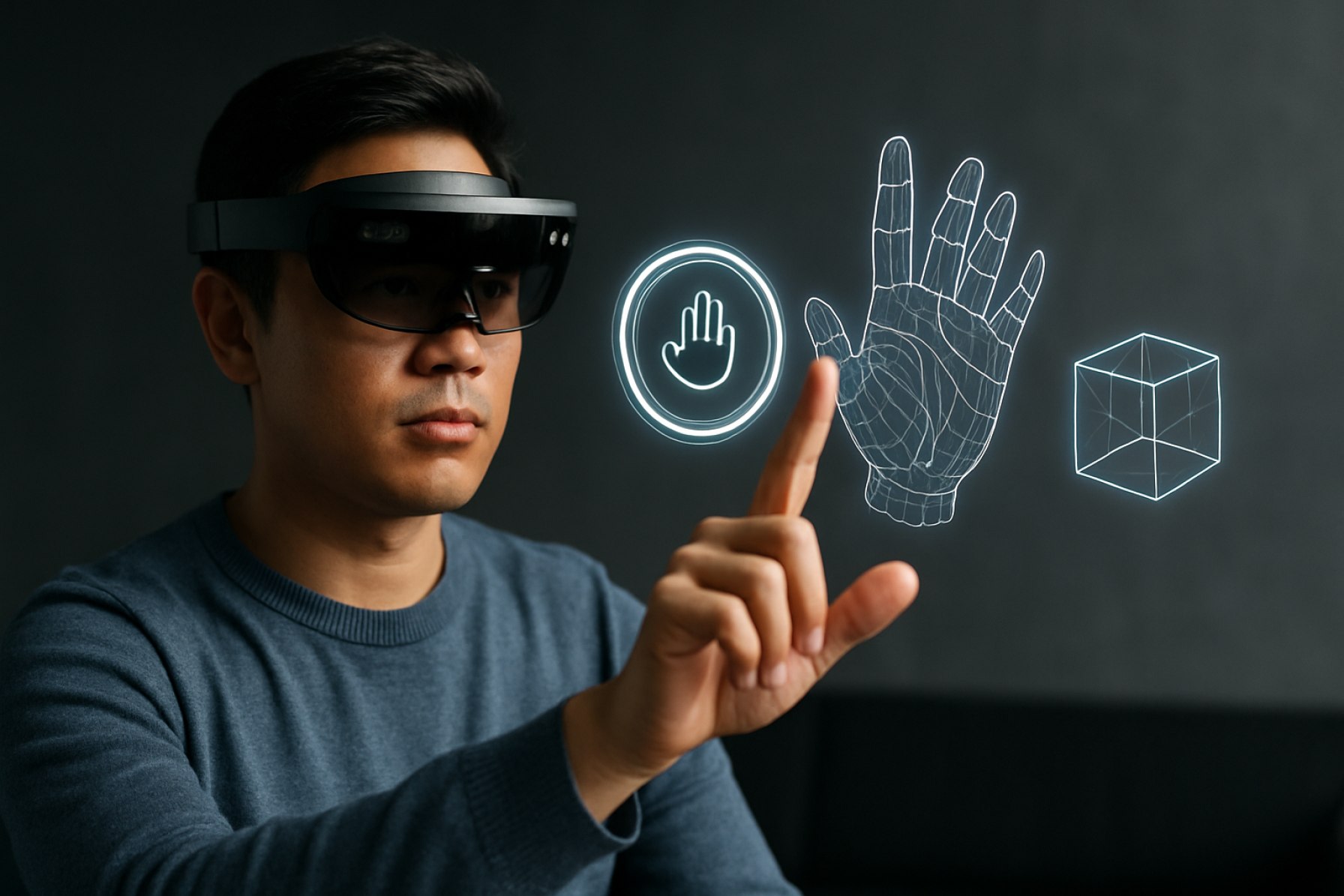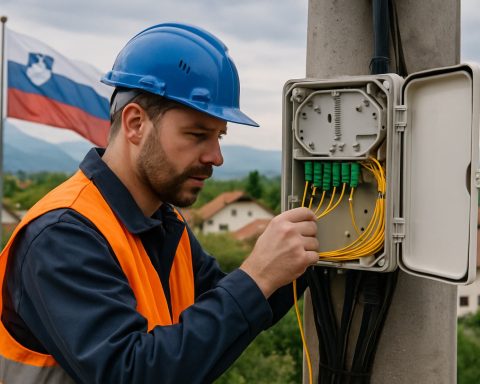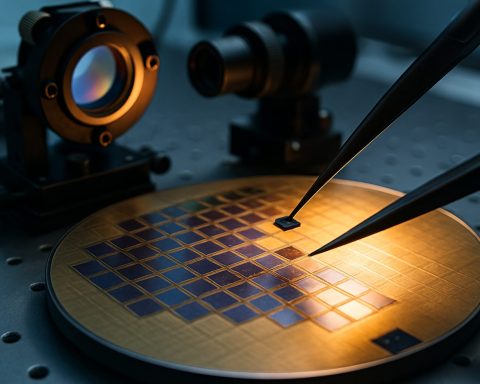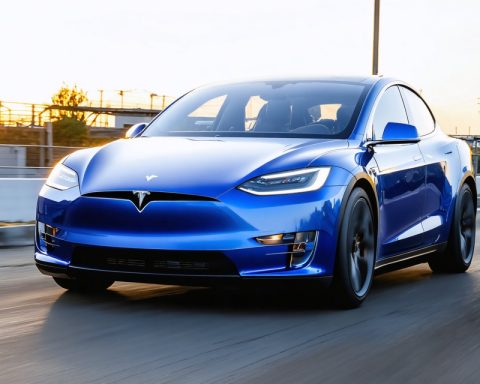Augmented Reality Gesture Recognition Systems in 2025: Transforming User Experience and Industry Standards. Explore the Breakthroughs, Market Growth, and Future Trajectory of Touchless Interaction.
- Executive Summary: Key Trends and Market Drivers in 2025
- Market Size and Growth Forecast (2025–2030): CAGR and Revenue Projections
- Core Technologies: Sensors, AI Algorithms, and Hardware Innovations
- Leading Players and Strategic Partnerships (e.g., Microsoft, Apple, Ultraleap)
- Application Sectors: Healthcare, Automotive, Gaming, Retail, and Beyond
- Regional Analysis: North America, Europe, Asia-Pacific, and Emerging Markets
- Regulatory Landscape and Industry Standards (IEEE, ISO)
- Challenges: Accuracy, Latency, Privacy, and User Adoption
- Future Outlook: Next-Gen Interfaces and Integration with AI/IoT
- Case Studies: Real-World Deployments and Success Stories (Official Company Sources)
- Sources & References
Executive Summary: Key Trends and Market Drivers in 2025
In 2025, augmented reality (AR) gesture recognition systems are experiencing rapid advancement, driven by the convergence of computer vision, machine learning, and sensor technologies. The sector is witnessing significant investment and product launches from major technology companies, as well as increased adoption across industries such as consumer electronics, automotive, healthcare, and industrial automation.
A key trend is the integration of advanced 3D sensing hardware—such as time-of-flight (ToF) cameras and structured light sensors—into AR headsets and smart devices. Companies like Microsoft and Apple are at the forefront, with their HoloLens and Vision Pro platforms, respectively, both leveraging sophisticated gesture recognition to enable intuitive, touch-free interaction. These systems utilize real-time hand tracking and spatial mapping, allowing users to manipulate virtual objects and interfaces with natural movements.
Automotive manufacturers are also incorporating AR gesture controls into next-generation vehicles. For example, BMW and Mercedes-Benz have demonstrated in-cabin gesture recognition for infotainment and navigation systems, aiming to enhance driver safety and convenience by reducing the need for physical controls.
In healthcare, AR gesture recognition is being deployed for surgical navigation and remote collaboration. Companies such as Philips are developing AR solutions that allow surgeons to interact with digital overlays in sterile environments, minimizing contamination risks and improving workflow efficiency.
The proliferation of edge AI chips and improvements in on-device processing are enabling more responsive and power-efficient gesture recognition, reducing latency and enhancing user experience. Qualcomm and Intel are key suppliers of such hardware, supporting a new generation of AR devices capable of complex gesture interpretation without reliance on cloud connectivity.
Looking ahead, the outlook for AR gesture recognition systems is robust. The continued miniaturization of sensors, combined with advances in deep learning algorithms, is expected to drive broader adoption in both consumer and enterprise markets. Regulatory bodies and industry alliances are also working to establish interoperability standards, which will further accelerate ecosystem growth and cross-platform compatibility.
In summary, 2025 marks a pivotal year for AR gesture recognition, with technology maturation, expanding use cases, and strong industry momentum positioning the sector for sustained growth in the coming years.
Market Size and Growth Forecast (2025–2030): CAGR and Revenue Projections
The market for Augmented Reality (AR) Gesture Recognition Systems is poised for robust expansion between 2025 and 2030, driven by advancements in computer vision, sensor technology, and the proliferation of AR applications across industries. As of 2025, the sector is witnessing accelerated adoption in consumer electronics, automotive interfaces, healthcare, and industrial automation, with leading technology providers and device manufacturers investing heavily in gesture-based interaction solutions.
Key industry players such as Microsoft, Apple, and Sony Group Corporation are integrating gesture recognition into their AR platforms and devices. For instance, Microsoft’s HoloLens 2 leverages advanced hand-tracking and gesture recognition to enable intuitive user experiences in enterprise and medical settings. Similarly, Apple’s Vision Pro, announced for release in 2024, incorporates sophisticated gesture-based controls, signaling the company’s commitment to natural user interfaces in spatial computing.
The automotive sector is also a significant growth driver, with companies like Continental AG and BMW Group developing AR gesture recognition systems for in-car infotainment and driver assistance. These innovations are expected to become increasingly mainstream by 2025, as automakers seek to enhance safety and user experience through touchless controls.
From a quantitative perspective, industry consensus projects a compound annual growth rate (CAGR) in the range of 18% to 25% for the global AR gesture recognition market from 2025 to 2030. Revenue projections for 2025 estimate the market size to be in the low single-digit billions (USD), with expectations to surpass $10 billion by the end of the decade, as adoption accelerates in both consumer and enterprise segments. This growth is underpinned by ongoing investments from hardware suppliers such as Leap Motion (Ultraleap) and Infineon Technologies AG, who provide critical components like depth sensors and 3D cameras.
Looking ahead, the outlook for AR gesture recognition systems remains highly positive. The convergence of AI-powered gesture analytics, miniaturized sensor arrays, and expanding AR content ecosystems is expected to drive further market penetration. As more industries recognize the value of touchless, intuitive interfaces, the sector is set to experience sustained double-digit growth through 2030, with North America, Europe, and East Asia leading adoption.
Core Technologies: Sensors, AI Algorithms, and Hardware Innovations
Augmented Reality (AR) gesture recognition systems are rapidly evolving, driven by advances in sensor technology, artificial intelligence (AI) algorithms, and specialized hardware. In 2025, the sector is witnessing a convergence of these core technologies, enabling more intuitive and robust user interactions for AR applications across consumer, enterprise, and industrial domains.
Sensor innovation remains foundational. Modern AR gesture systems increasingly rely on multi-modal sensor arrays, combining depth cameras, infrared sensors, and inertial measurement units (IMUs) to capture fine-grained hand and body movements. Microsoft continues to refine its Azure Kinect platform, integrating high-resolution depth sensing and spatial audio for enhanced gesture tracking. Similarly, Leap Motion (now part of Ultraleap) has advanced its optical hand-tracking modules, which are being embedded in headsets and standalone AR devices for precise, low-latency gesture input.
AI algorithms are central to interpreting sensor data and translating it into actionable commands. In 2025, deep learning models—particularly convolutional neural networks (CNNs) and transformer-based architectures—are being optimized for real-time gesture recognition on edge devices. Qualcomm is a key player, integrating AI accelerators into its Snapdragon XR platforms, enabling on-device inference for hand and finger tracking without reliance on cloud processing. This reduces latency and enhances privacy, both critical for seamless AR experiences.
Hardware innovation is also accelerating. Custom silicon for AR, such as dedicated gesture recognition chips, is becoming more prevalent. Apple’s latest AR devices reportedly feature proprietary silicon designed to process spatial and gesture data efficiently, supporting complex interactions like pinch, swipe, and multi-finger gestures. Meanwhile, Meta (formerly Facebook) is investing in wrist-worn EMG (electromyography) sensors, which interpret neural signals for gesture input, potentially enabling more subtle and accurate control than vision-based systems alone.
Looking ahead, the next few years are expected to bring further miniaturization of sensors, improved energy efficiency, and greater integration of AI at the edge. Industry leaders are also exploring sensor fusion—combining visual, inertial, and bioelectrical data—to achieve robust gesture recognition in diverse environments. As these core technologies mature, AR gesture recognition systems are poised to become a standard interface for spatial computing, unlocking new possibilities in gaming, remote collaboration, and hands-free industrial workflows.
Leading Players and Strategic Partnerships (e.g., Microsoft, Apple, Ultraleap)
The landscape of augmented reality (AR) gesture recognition systems in 2025 is shaped by a dynamic interplay of established technology giants and innovative specialists, each leveraging strategic partnerships to accelerate development and market adoption. Key players such as Microsoft, Apple, and Ultraleap are at the forefront, driving advancements in both hardware and software for intuitive, touchless interaction in AR environments.
Microsoft continues to expand its AR ecosystem, building on the HoloLens platform. The company’s gesture recognition capabilities are deeply integrated into its mixed reality solutions, enabling users to interact with digital content using hand and finger movements. In recent years, Microsoft has strengthened its position through collaborations with enterprise partners in healthcare, manufacturing, and education, aiming to deliver robust, scalable AR solutions. The company’s ongoing investments in AI and computer vision further enhance the precision and responsiveness of its gesture recognition systems.
Apple has made significant strides with the introduction of its Vision Pro headset, which features advanced hand and eye tracking for seamless AR experiences. Apple’s proprietary silicon and sensor fusion technologies underpin its gesture recognition, allowing for low-latency, high-accuracy input. The company’s ecosystem approach—integrating ARKit, hardware, and developer tools—has fostered a growing community of AR application developers. Apple’s strategic acquisitions in the computer vision and sensor domains, as well as partnerships with content creators and enterprise clients, are expected to further solidify its leadership in the coming years.
Ultraleap, a specialist in hand tracking and mid-air haptics, has emerged as a key enabler for AR gesture recognition. Its technology is embedded in a range of AR and VR devices, providing precise, camera-based hand tracking without the need for physical controllers. Ultraleap’s collaborations with headset manufacturers and automotive companies have broadened the reach of its solutions, particularly in public installations and automotive infotainment systems. The company’s open platform approach encourages integration with third-party hardware and software, supporting rapid innovation across industries.
Other notable contributors include Meta, which continues to invest in hand tracking for its Quest line of devices, and Google, whose ARCore platform supports gesture-based interactions on Android devices. Strategic partnerships—such as those between device manufacturers, sensor suppliers, and software developers—are expected to intensify, with a focus on interoperability, user privacy, and real-time performance. As AR adoption accelerates across sectors, these alliances will be critical in shaping the next generation of gesture recognition systems.
Application Sectors: Healthcare, Automotive, Gaming, Retail, and Beyond
Augmented Reality (AR) gesture recognition systems are rapidly transforming multiple sectors by enabling intuitive, touchless interaction with digital content. As of 2025, these systems are being integrated into healthcare, automotive, gaming, retail, and other industries, driven by advances in computer vision, machine learning, and sensor technologies.
In healthcare, AR gesture recognition is enhancing surgical precision and training. Surgeons can manipulate 3D medical images or access patient data in real time without physical contact, reducing contamination risks. Companies like Microsoft are at the forefront, with their HoloLens 2 device supporting gesture-based controls for medical visualization and remote collaboration. Hospitals and medical schools are increasingly adopting such solutions for simulation and intraoperative guidance.
The automotive sector is leveraging AR gesture recognition to improve driver safety and in-car experiences. Gesture-based controls allow drivers to interact with infotainment systems, navigation, and climate controls without taking their eyes off the road. BMW has integrated gesture recognition in its vehicles, enabling users to adjust volume or answer calls with simple hand movements. As vehicles become more connected and autonomous, the demand for seamless, distraction-free interfaces is expected to grow.
Gaming remains a major driver for AR gesture recognition innovation. Immersive AR games now allow players to interact with virtual objects and characters using natural hand movements. Meta (formerly Facebook) has invested heavily in hand-tracking technology for its Quest headsets, enabling developers to create gesture-based AR experiences. The gaming industry is expected to continue pushing the boundaries of gesture recognition, with new titles and hardware releases anticipated in the coming years.
In retail, AR gesture recognition is reshaping customer engagement and shopping experiences. Shoppers can use gestures to browse virtual catalogs, try on products virtually, or interact with digital signage in stores. Samsung Electronics and Sony Group Corporation are developing AR platforms that support gesture-based navigation and product visualization, aiming to bridge the gap between online and in-store shopping.
Beyond these sectors, AR gesture recognition is finding applications in education, industrial training, and smart home environments. As hardware becomes more affordable and algorithms more robust, adoption is expected to accelerate. Industry leaders are investing in open development platforms and partnerships to expand the ecosystem, signaling a strong outlook for AR gesture recognition systems across diverse domains through 2025 and beyond.
Regional Analysis: North America, Europe, Asia-Pacific, and Emerging Markets
The global landscape for Augmented Reality (AR) gesture recognition systems is rapidly evolving, with distinct regional trends shaping adoption and innovation. As of 2025, North America, Europe, Asia-Pacific, and emerging markets each present unique drivers and challenges for the deployment of these technologies.
North America remains at the forefront of AR gesture recognition system development, propelled by robust investment in R&D and a thriving ecosystem of technology giants and startups. Companies such as Microsoft and Apple are actively integrating gesture recognition into their AR platforms, with the former’s HoloLens and the latter’s Vision Pro both supporting advanced hand-tracking and spatial interaction. The region benefits from strong enterprise adoption in sectors like healthcare, manufacturing, and education, where touchless interfaces are increasingly valued for hygiene and efficiency. The presence of leading chipmakers such as Qualcomm further accelerates innovation, as their Snapdragon XR platforms enable low-latency, on-device gesture processing.
Europe is characterized by a collaborative approach, with cross-border research initiatives and a focus on privacy and regulatory compliance. Companies like Infineon Technologies are advancing 3D time-of-flight sensors, which are integral to accurate gesture recognition in AR devices. The automotive and industrial sectors are particularly active, leveraging gesture-based AR for hands-free control and maintenance. The European Union’s emphasis on digital sovereignty and data protection is shaping the design and deployment of gesture recognition systems, ensuring that solutions meet stringent privacy standards.
Asia-Pacific is witnessing the fastest growth in AR gesture recognition adoption, driven by consumer electronics giants and a burgeoning gaming and entertainment market. Firms such as Samsung Electronics and Sony Group Corporation are integrating gesture recognition into AR headsets and smart devices, targeting both consumer and enterprise segments. China, South Korea, and Japan are leading in patent filings and product launches, with local startups and established players collaborating to create affordable, scalable solutions. The region’s large population and high smartphone penetration further fuel demand for gesture-based AR applications in retail, education, and social media.
Emerging markets in Latin America, the Middle East, and Africa are gradually entering the AR gesture recognition space, primarily through mobile-based solutions and partnerships with global technology providers. While infrastructure and cost remain barriers, initiatives to localize content and leverage cloud-based processing are expanding access. As 5G networks roll out and device costs decrease, these regions are expected to see accelerated adoption, particularly in education, healthcare, and public services.
Looking ahead, regional collaboration, regulatory harmonization, and advances in sensor technology are poised to drive further growth and innovation in AR gesture recognition systems worldwide.
Regulatory Landscape and Industry Standards (IEEE, ISO)
The regulatory landscape and industry standards for Augmented Reality (AR) Gesture Recognition Systems are rapidly evolving as the technology matures and adoption accelerates across sectors such as manufacturing, healthcare, automotive, and consumer electronics. In 2025, the focus is on harmonizing safety, interoperability, and privacy requirements, with leading standards organizations and industry consortia playing pivotal roles.
The IEEE (Institute of Electrical and Electronics Engineers) continues to be a central authority in developing technical standards for AR systems, including gesture recognition. The IEEE 2048 series, which addresses AR and VR interoperability, is being expanded to include more detailed specifications for gesture-based interfaces, ensuring that devices and software from different vendors can communicate seamlessly. This is particularly relevant as AR hardware from companies like Microsoft (HoloLens), Lenovo, and Apple (Vision Pro) increasingly incorporate advanced gesture recognition capabilities.
On the international front, the International Organization for Standardization (ISO) is advancing work on standards such as ISO/IEC 30150, which covers user interfaces for wearable devices, including gesture-based controls. In 2025, ISO is expected to release updates that address the unique challenges of AR gesture recognition, such as latency, accuracy, and user safety. These standards are being developed in collaboration with industry stakeholders to ensure global applicability and to facilitate cross-border deployment of AR solutions.
Privacy and data protection are also at the forefront of regulatory discussions. Gesture recognition systems often process sensitive biometric data, prompting regulatory bodies in regions like the European Union to scrutinize compliance with frameworks such as the General Data Protection Regulation (GDPR). Industry groups, including the VR/AR Association, are working with manufacturers to develop best practices for data minimization, user consent, and secure data handling.
- IEEE is expanding AR/VR interoperability standards to include gesture recognition, supporting cross-platform compatibility.
- ISO is updating standards for wearable and AR user interfaces, with a focus on gesture-based controls and safety.
- Major AR hardware vendors are aligning with these standards to ensure regulatory compliance and market acceptance.
- Privacy regulations are shaping the design and deployment of gesture recognition systems, especially in regions with strict data protection laws.
Looking ahead, the next few years will see increased collaboration between standards bodies, industry consortia, and regulatory agencies to address emerging challenges such as AI-driven gesture interpretation and accessibility. As AR gesture recognition becomes more ubiquitous, adherence to robust standards and regulatory frameworks will be critical for fostering innovation, user trust, and global market growth.
Challenges: Accuracy, Latency, Privacy, and User Adoption
Augmented Reality (AR) gesture recognition systems are rapidly evolving, but several critical challenges remain as the sector moves through 2025 and into the coming years. These challenges—accuracy, latency, privacy, and user adoption—are central to the technology’s mainstream viability and are being actively addressed by leading industry players.
Accuracy remains a primary concern. Gesture recognition in AR relies on computer vision and sensor fusion, but real-world environments introduce variability in lighting, backgrounds, and user physiology. Even with advances in machine learning, systems can misinterpret gestures, especially in dynamic or cluttered settings. Companies such as Microsoft (with HoloLens) and Apple (with Vision Pro) are investing in multi-modal sensor arrays and improved algorithms to enhance recognition rates. For example, Apple’s Vision Pro leverages a combination of cameras and LiDAR to track hand and finger movements with high precision, but the company acknowledges ongoing work to improve robustness across diverse user populations and environments.
Latency is another significant hurdle. For AR experiences to feel natural, gesture recognition must occur in real time, with minimal delay between user action and system response. High latency can break immersion and cause user frustration. Meta (formerly Facebook), through its Quest and Ray-Ban Meta smart glasses, is focusing on edge computing and optimized neural networks to reduce processing times. Similarly, Snap Inc. is developing lightweight, on-device models for its Spectacles AR platform to minimize lag, but achieving sub-20ms response times in all scenarios remains a technical challenge.
Privacy concerns are intensifying as gesture recognition systems collect and process sensitive biometric data. The need to capture detailed hand and body movements raises questions about data storage, user consent, and potential misuse. Industry leaders are implementing on-device processing to limit data transmission and are adopting privacy-by-design principles. For instance, Samsung Electronics has publicly committed to enhancing user privacy in its AR initiatives by ensuring that gesture data is processed locally whenever possible. Regulatory scrutiny is expected to increase, especially in regions with stringent data protection laws.
User adoption is closely tied to the above factors, as well as to comfort and intuitiveness. Even the most advanced systems face resistance if gestures are unnatural or if devices are cumbersome. Companies are investing in ergonomic hardware and intuitive gesture sets. Lenovo and Sony Group Corporation are both exploring lightweight AR headsets and more natural gesture vocabularies to lower the barrier to entry. However, widespread adoption will depend on continued improvements in accuracy, latency, and privacy, as well as compelling use cases that demonstrate clear value to consumers and enterprises.
Looking ahead, the AR gesture recognition sector is expected to make significant strides, but overcoming these challenges will be essential for unlocking its full potential in both consumer and professional markets.
Future Outlook: Next-Gen Interfaces and Integration with AI/IoT
The future of augmented reality (AR) gesture recognition systems is poised for significant transformation as next-generation interfaces increasingly integrate artificial intelligence (AI) and Internet of Things (IoT) technologies. In 2025 and the coming years, the convergence of these domains is expected to drive both the sophistication and ubiquity of gesture-based AR solutions across industries.
Leading technology companies are actively advancing gesture recognition hardware and software. Microsoft continues to evolve its HoloLens platform, leveraging AI-powered hand tracking and spatial mapping to enable more natural and intuitive user interactions. The company’s ongoing research into neural networks for gesture interpretation is expected to further reduce latency and improve accuracy, making AR interfaces more seamless for enterprise and consumer applications.
Similarly, Apple is anticipated to expand its AR ecosystem, building on the capabilities of its Vision Pro headset and the underlying visionOS. Apple’s investments in machine learning and sensor fusion are likely to yield more robust gesture recognition, with the potential for integration into broader IoT environments—enabling users to control smart home devices or access contextual information with simple hand movements.
On the hardware front, Qualcomm is pushing the boundaries of edge AI processing with its Snapdragon XR platforms, which support advanced computer vision and low-power gesture recognition for AR wearables. These chipsets are expected to underpin a new generation of lightweight, always-on AR devices capable of real-time gesture interpretation and connectivity with IoT networks.
In the industrial and automotive sectors, companies like Bosch are piloting AR gesture interfaces for maintenance, training, and in-vehicle infotainment systems. By integrating AI-driven gesture recognition with IoT-enabled machinery, these solutions promise to enhance operational efficiency and safety, particularly in hands-busy environments.
Looking ahead, the proliferation of 5G and edge computing will further accelerate the adoption of AR gesture recognition systems. Real-time data processing and low-latency connectivity will enable more responsive and context-aware interfaces, while AI will continue to refine gesture interpretation across diverse user populations and environments. As interoperability standards mature, seamless integration between AR devices, AI services, and IoT ecosystems is expected to become the norm, paving the way for truly intuitive, multimodal human-machine interaction.
Case Studies: Real-World Deployments and Success Stories (Official Company Sources)
Augmented Reality (AR) gesture recognition systems have transitioned from experimental prototypes to real-world deployments across diverse industries. In 2025, several leading technology companies and manufacturers have showcased successful implementations, highlighting both the maturity and versatility of these systems.
One of the most prominent examples is Microsoft’s HoloLens 2, which integrates advanced hand-tracking and gesture recognition to enable intuitive interaction with digital content in mixed reality environments. The HoloLens 2 is widely used in sectors such as manufacturing, healthcare, and education. For instance, Microsoft has partnered with organizations like Mercedes-Benz to equip automotive technicians with AR headsets, allowing them to manipulate virtual components and access schematics hands-free, thereby improving efficiency and reducing errors.
In the consumer electronics space, Apple has made significant strides with the introduction of the Vision Pro headset, which leverages sophisticated gesture recognition to control immersive AR experiences. The device’s hand-tracking capabilities allow users to interact with virtual objects, navigate interfaces, and perform complex tasks without physical controllers. Apple’s focus on seamless, controller-free interaction has set a new standard for user experience in AR, with early adopters in creative industries and enterprise training reporting increased engagement and productivity.
Industrial applications have also seen robust adoption. Ultraleap (formerly Leap Motion) has deployed its hand-tracking modules in AR systems used for remote maintenance, assembly line guidance, and medical training. Their technology enables precise gesture input, even in challenging environments, and has been integrated into custom AR solutions by manufacturers and healthcare providers. For example, medical professionals use AR overlays and gesture controls to visualize patient data and manipulate 3D anatomical models during procedures, enhancing both accuracy and safety.
In the automotive sector, BMW has piloted AR gesture recognition in its production facilities, allowing workers to interact with digital work instructions and quality control checklists without interrupting their workflow. This hands-free approach has led to measurable improvements in assembly speed and error reduction, as reported by BMW’s official communications.
Looking ahead, these case studies underscore a clear trend: AR gesture recognition systems are moving beyond pilot projects into scalable, mission-critical deployments. As hardware and software continue to advance, industry leaders anticipate broader adoption across logistics, field service, and collaborative design, with ongoing investments from companies like Microsoft, Apple, and Ultraleap driving innovation and real-world impact.
Sources & References
- Microsoft
- Apple
- Philips
- Qualcomm
- Infineon Technologies AG
- Meta
- Ultraleap
- IEEE
- Lenovo
- International Organization for Standardization (ISO)
- Snap Inc.
- Bosch








